By Eric Ladd PUBLISHER
U.S. Highway 191, once a scenic byway along the Gallatin River, is fast becoming one of Montana’s most perilous routes. With Gallatin County’s rapid growth and a sharp increase in commuter traffic, drivers now face a dangerous cocktail of hazards—from potholes and narrow lanes to fast-moving semis and unpredictable weather.
U.S. 191 isn’t just another stretch of road—it’s the sole connection between Big Sky and Bozeman, serving as the gateway to West Yellowstone and Yellowstone National Park. This critical artery links local communities and fuels the regional economy. As the only direct route for residents, tourists and commerce, any disruption on U.S. 191 sends shockwaves through the region.
Local residents and daily commuters are sounding the alarm. One frustrated driver, who requested anonymity, noted, “I’ve seen accidents almost every week now. The road is too narrow, the pull-outs are underutilized, and the potholes make even a small mistake potentially fatal.”
The danger is not just from the deteriorating road itself. The combination of fast-moving semi-truck traffic and small passenger vehicles has created a hostile environment, especially during peak morning and evening rush hours.
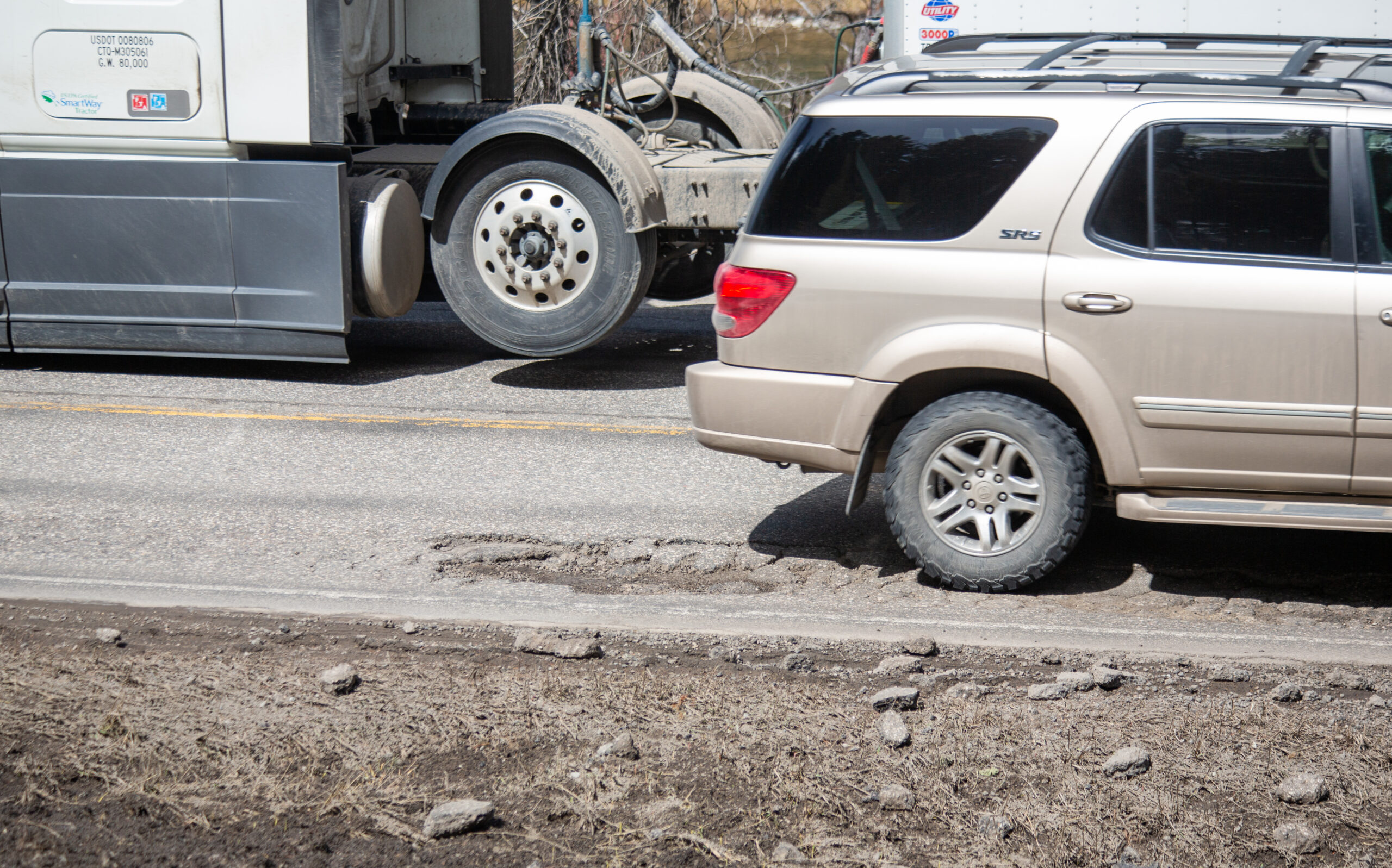
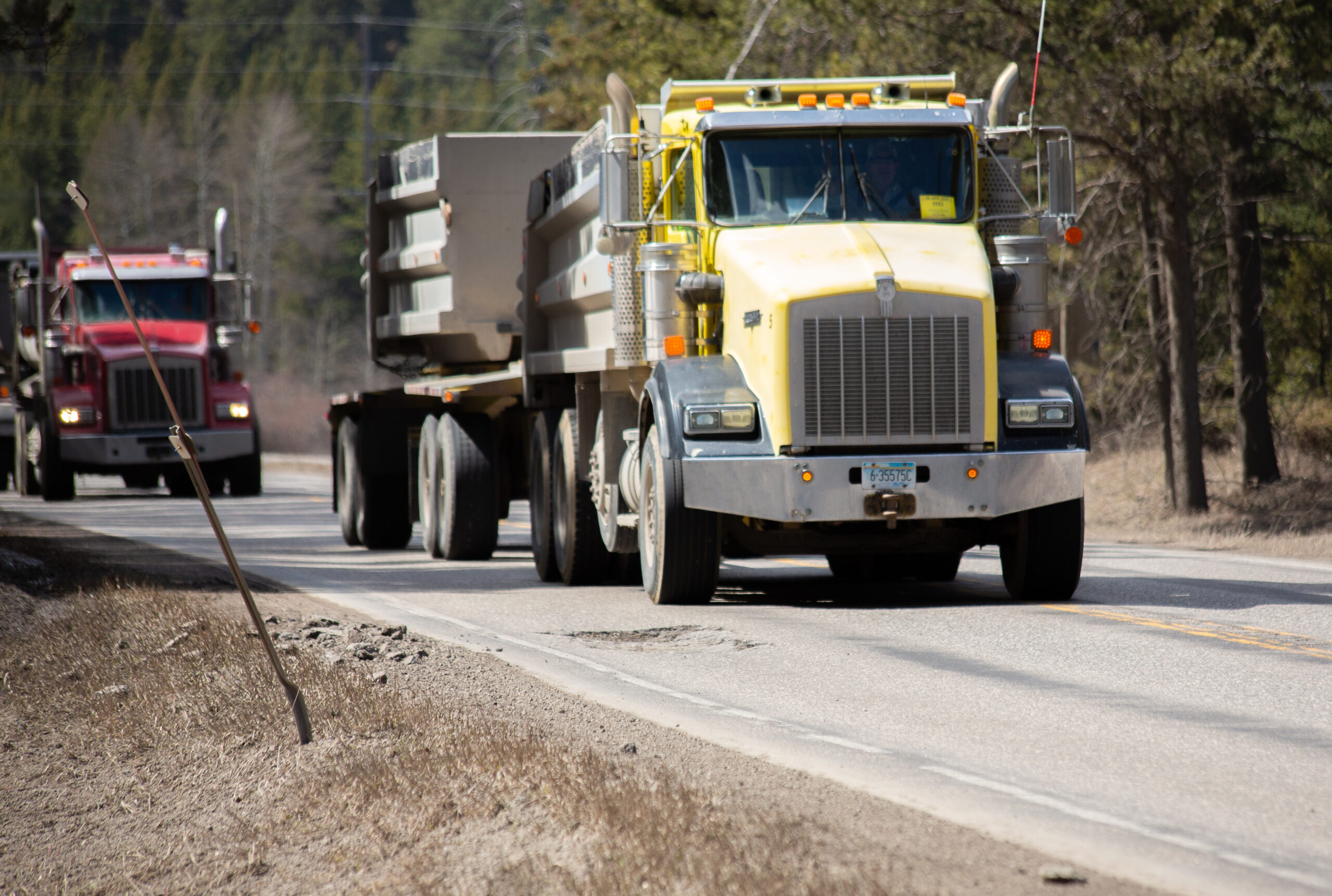
The deterioration of overused infrastructure
The road’s perils are compounded by several interrelated issues. The aging infrastructure along the river forces drivers into precarious situations on a narrow roadway. The high volume of fast-moving semi-trucks overwhelms the limited pull-out areas, and the mix of small cars and large trucks creates additional hazards. Harsh weather conditions further complicate matters, while animals crossing a road with little protection add an unpredictable element. Human factors, including instances of drinking and driving, have also been reported, further increasing risk for all road users.
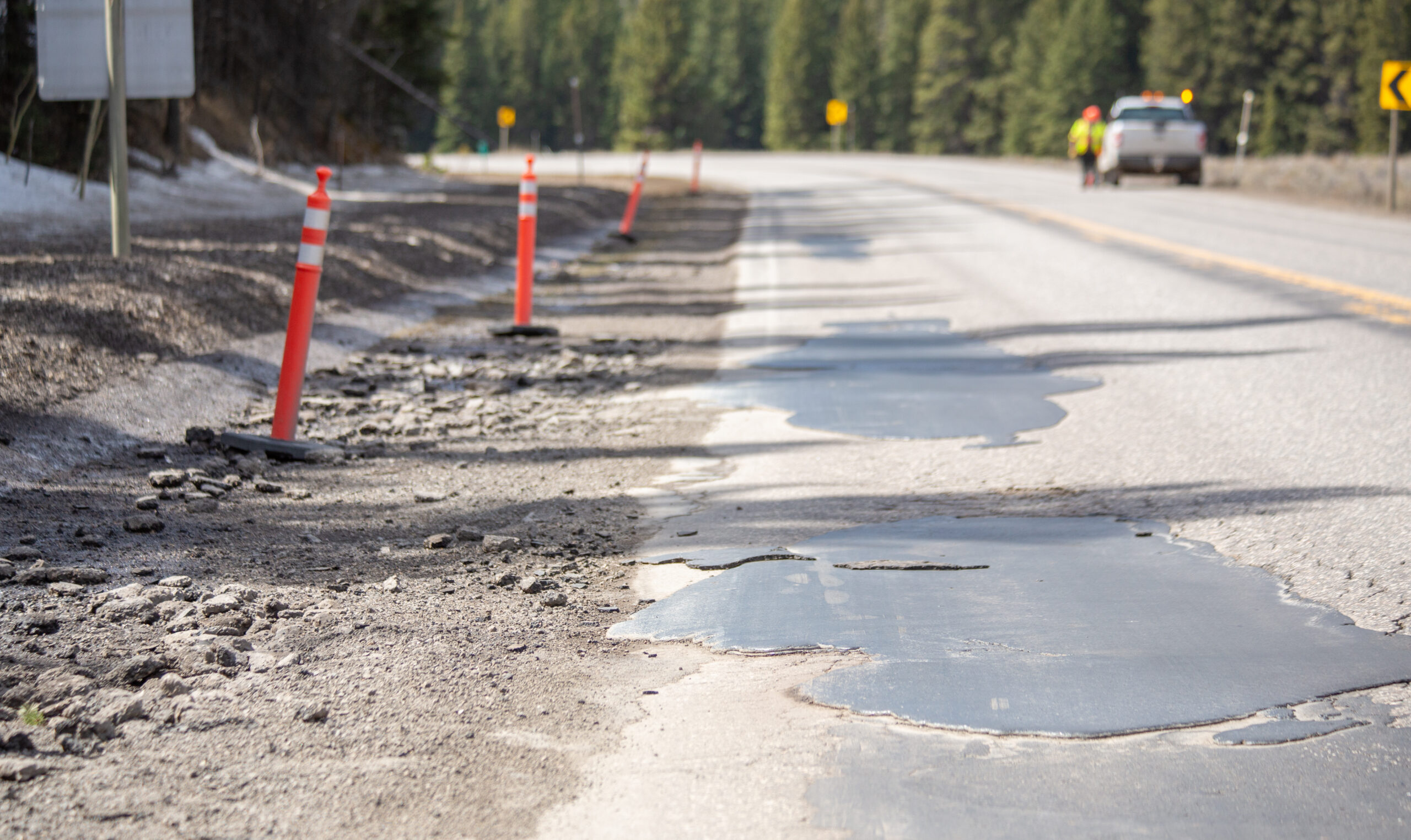
A growing concern among community members is the visible deterioration of U.S. 191, largely due to the volume of traffic it receives. The persistent wear and tear is not only degrading the roadway’s condition but most likely contributing significantly to the danger. In response, the Montana Department of Transportation has “absolutely” been monitoring the situation closely, according to Geno Liva, MDT regional supervisor.
“Roadway hazards are a major concern of ours, and often, they come up when we’re not ready to get out there and work on them… We work to get these fixed in a timely manner, but we do have to consider the safety of our workforce as well, and trying to keep them out of harm’s way,” Liva told EBS.
He explained the factors that make U.S. 191 a challenging roadway.
“It’s got difficult topography through the canyon, you couple that with high traffic volumes peaking in morning and late afternoon. We have snow and ice, which are major concerns for several months of the year… Our maintenance, you know, we struggle to complete roadway repair activities due to the nature of the narrow canyon and the high traffic volumes,” Liva said.
He added that U.S. 191 faces a challenging mix of people who want to enjoy the “beautiful” scenery, and others who are in a hurry to get to and from work. “And we have a narrow canyon with a river and a road, and mountains—and there’s not a whole lot of extra room for us,” Liva said.
Montana Highway Patrol data shows that in 2024 alone, 248 accidents were reported between Four Corners (Bozeman) and West Yellowstone, including 68 vehicle-wildlife collisions. The 2024 collisions resulted in five fatalities and at least four life-threatening injuries, 48 minor injuries and 23 “possible injuries,” according to MHP.
“I never imagined a routine drive home could turn into a life-threatening ordeal. One wrong move on the pothole-riddled road, and you’re fighting for your life.”
Anonymous driver whose car was severely damaged
Liva said accidents have been consistent since about 2017, with 2023 seeing the fewest number of accidents in that span.
“With it being fairly consistent, we’re not concerned with the trend that we have there,” Liva said. “But obviously, you know, MDT, safety is our priority and we always want to fall back on that. The fewer number of accidents we have on our roadway, the better off for us.”
Every day starting around 6 a.m., a solid line of traffic emerges from Bozeman heading toward Big Sky, with roughly 4,100 vehicles making the journey each way, according to MDT’s traffic counter near Big Sky. This relentless flow of commuters further compounds the risk on an already hazardous road.
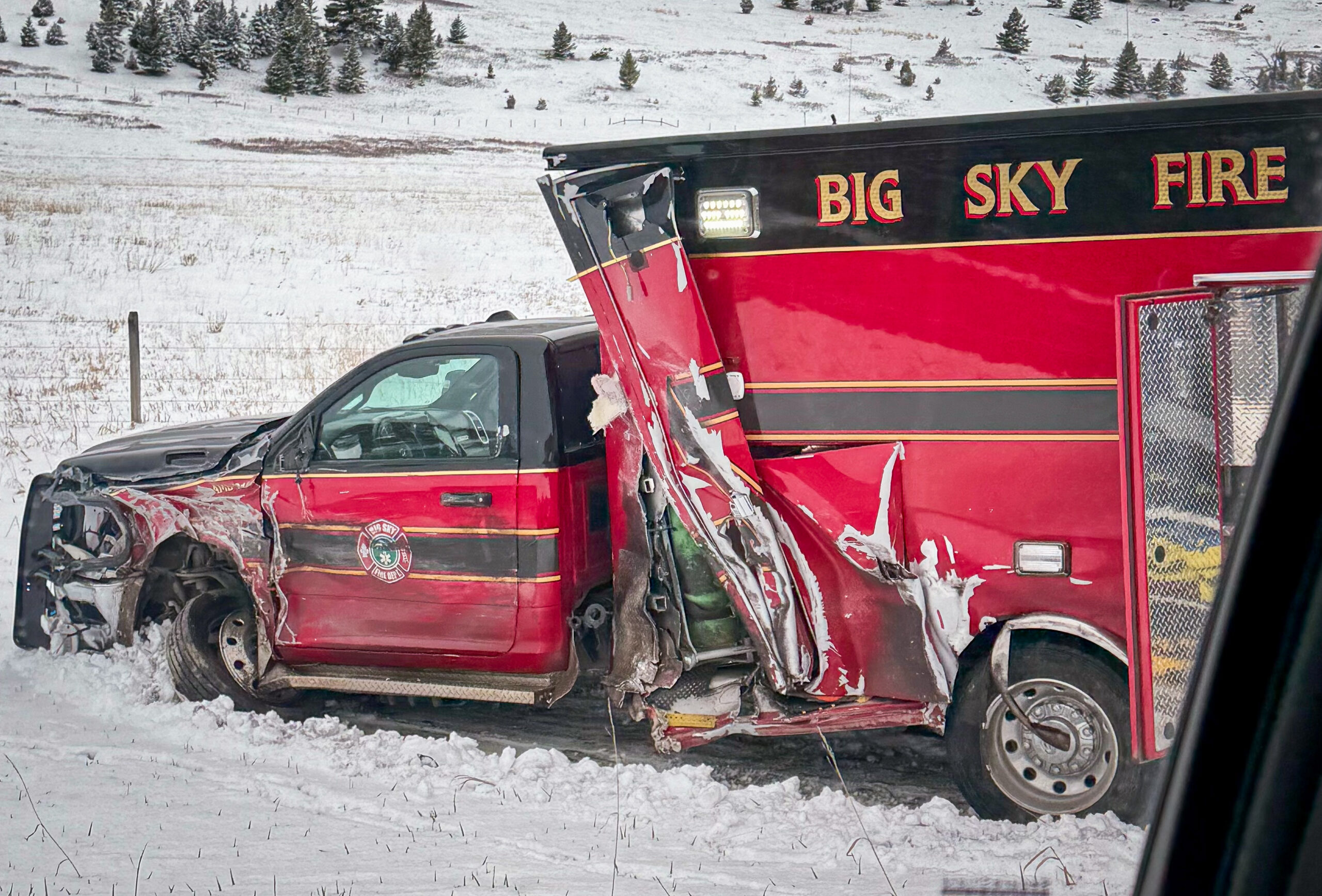
This past winter, accidents have caused a handful of full shutdowns of the canyon, with some closures lasting for multiple hours. Most recently, on March 15, a multi-vehicle accident involving a truck resulted in snowmobiles flying off and colliding with other vehicles, which closed the canyon for over two afternoon hours, and on April 17, a community member passed away in a collision with a Big Sky Fire Department ambulance, closing the canyon for two-and-a-half evening hours.
Such incidents not only disrupt daily commutes but also transform U.S. 191 into a dangerous bottleneck, leaving residents of Big Sky potentially trapped with no reasonable egress point during critical times—imagine hundreds of Big Sky drivers attempting to escape a wildfire, only to run into blocked highway due to frantic driving on an overstressed road.
Accident survivors have recounted harrowing tales of near-misses and collisions. One local resident, whose car was severely damaged in a recent accident, recalled, “I never imagined a routine drive home could turn into a life-threatening ordeal. One wrong move on the pothole-riddled road, and you’re fighting for your life.”
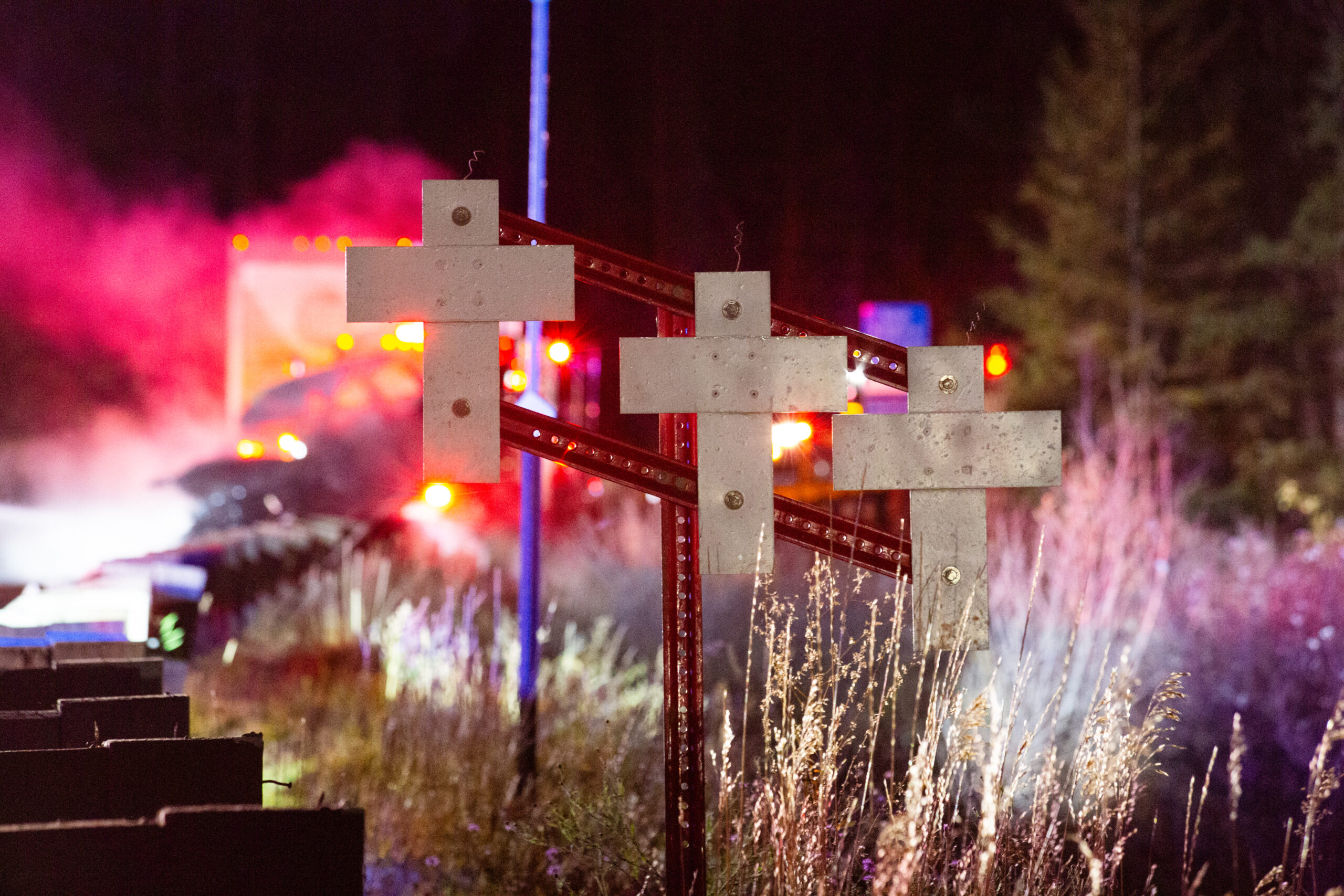
Gallatin County Sheriff Sergeant Dan Haydon discussed the road in a phone call with EBS. He noted that U.S. 191 has benefitted from safety improvements in recent years, but at the same time, the number of drivers has increased significantly and this leads to a higher volume of total accidents.
“Overall, I think the road is safer than it has been,” Haydon said. “But because we have the volume, it just means we’re going to have more crashes, some of which are significant.”
Haydon said improvements have been noteworthy between Spanish Creek and Big Sky, with improved signage, guardrails, and the addition of rumble strips in the middle of the road. As a result, he believes most of the white roadside crosses—representing fatal crashes—are from more than a decade ago.
Haydon echoed Liva’s comment: MDT is trying its best. Still, he acknowledged that potholes have been popping up every week in the springtime, some dangerous in size or location. He explained that hazards increase when the vehicle ahead needs to suddenly swerve, so keeping a safe trailing distance is “so huge” in terms of avoiding risk.
“If I’m close to the car in front of me, I’m never going to have the time to see the pothole,” not to mention adjusting course safely, Haydon explained. However, he noted there is “certainly” a lot of tailgating from drivers who are rushing to their destination, often a time-sensitive job.
In addition to potholes, animals become another obstacle as they roam habitat on both sides of the highway. Holly Pippel is an activist and photographer based in Gallatin Gateway, who observes the daily conflict between wildlife habitat and human travelers.
“The daily challenges of traveling the Highway 191 gauntlet, for both people and wildlife, navigating the high volume of traffic has had dire consequences for both,” Pippel told EBS. “Speed, distracted drivers, road and weather conditions, aggressive drivers, wildlife migrations and human impatience has proven to be a deadly mix.”
Brad Niva, CEO of the Big Sky Chamber of Commerce, also weighed in on the situation. He began by noting that U.S. 191 is “an amazing road” that enables just about everything that happens in Big Sky—roughly 75% of Big Sky’s workforce lives outside the community, according to BSRAD data.
“However, we as a community have exceeded [U.S. 191’s] capacity, and it needs some love… to ensure that it serves the needs of our community, and Montanans for years to come,” Niva said.
He noted that despite MDT’s funding constraints, he’s been pleased to see the state agency paying closer attention to U.S. 191 and Montana Highway 64, recognizing their importance to the state. But there’s more to be done.
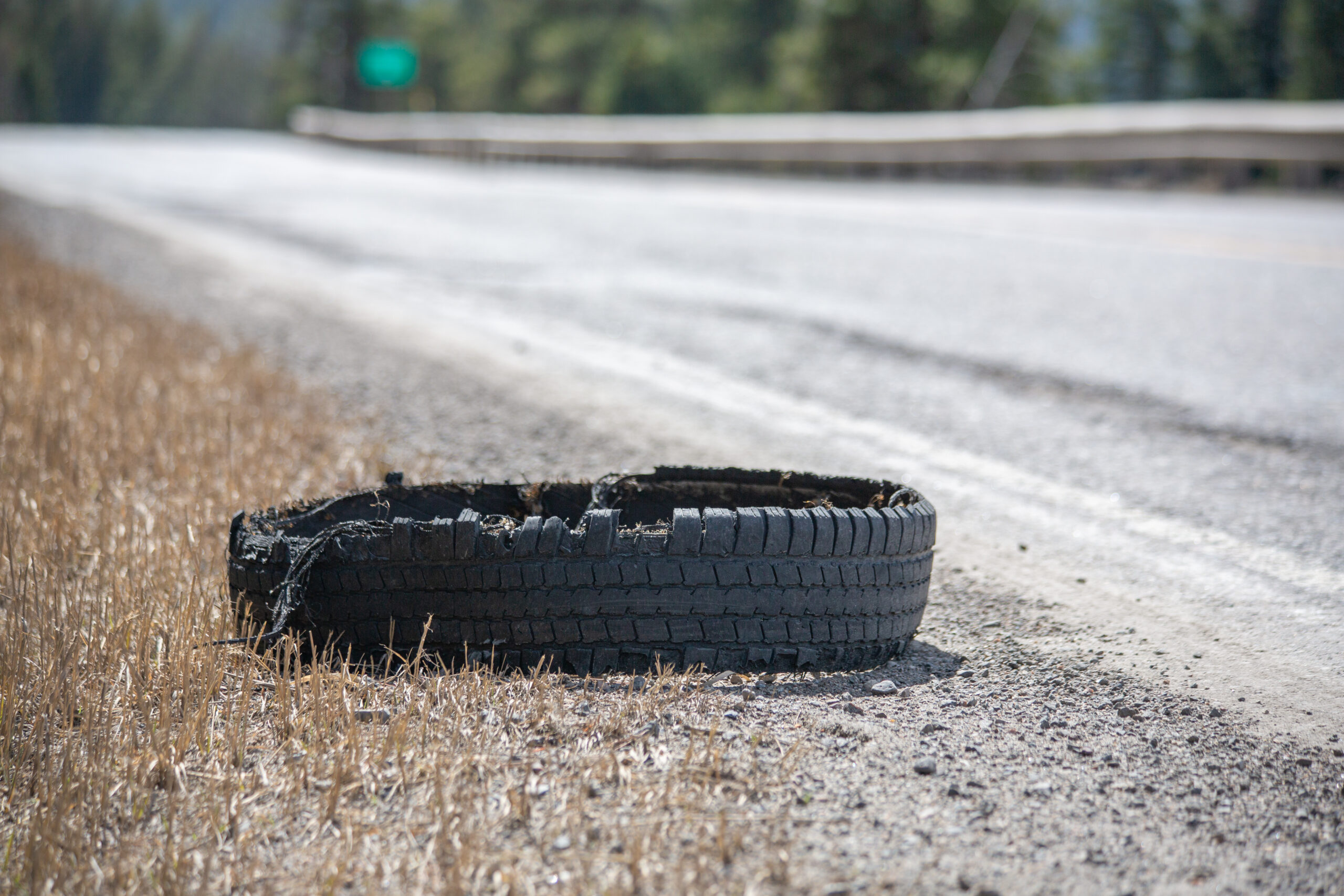
“And we need everyone to come together, including the federal government, to find ways to support this highway and other highways that are crucial to Montana,” Niva said.
Regular commuters like Kristin Hinman have their own perspective on the daily challenges.
Hinman lives on Spanish Creek Road and turns onto U.S. 191 most days. She calls it “The Gallatin Canyon 500” during busy times in the morning and evening, when many drivers are “really excited” to speed through the canyon. “We definitely do have a rush hour,” she said, adding that she plans her whole day around avoiding those times. She also avoids driving at dawn or dusk when animals are more likely to cross the road.
In her years commuting to Big Sky for work, she’s run into the dreaded line of stopped cars a handful of times—an uncertain sign of an accident and road blockage ahead.
“Especially when you’re sitting for a long time, you’re like, ‘Oh, something really bad happened,’” Hinman said.
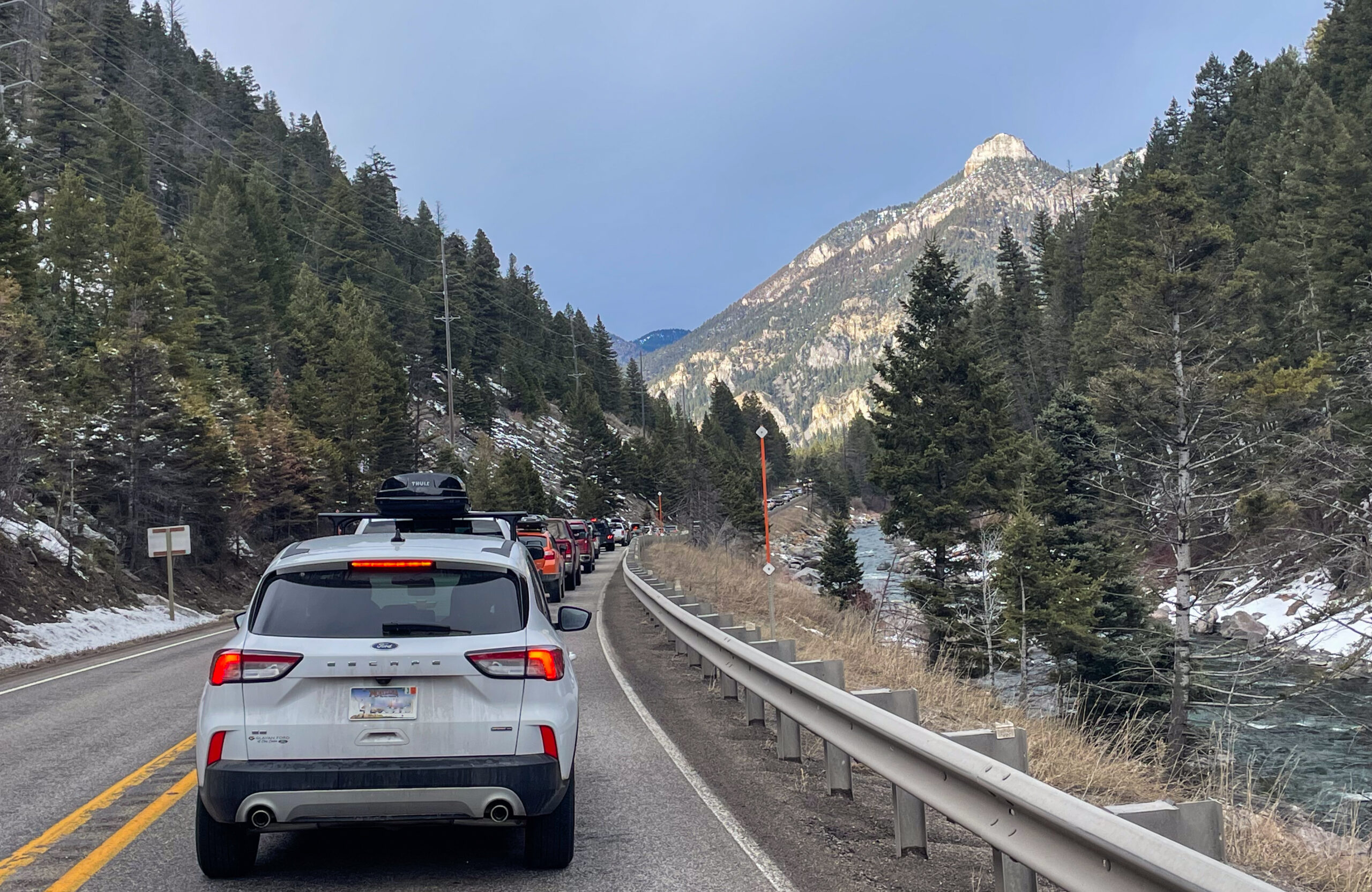
Stress, caution, and constant vigilance is required to navigate a road fraught with dangers.
When asked for advice on safely navigating the canyon, Sgt. Haydon stressed the importance of giving space to other drivers, improving the reactionary gap in case something unfolds ahead.
“Do not ride somebody else’s bumper through the canyon,” Haydon said. “You’re not going to make anyone go faster, all you’re going to do is increase your stress, and increase that other driver’s stress… To avoid an accident you have to see the potential coming.”
He added there’s four factors in almost all of the highway’s crashes that result in major injuries or fatalities. To “significantly” reduce the likelihood of a crash, drivers should avoid all four: occupants not wearing seatbelts; speeding, which is especially dangerous during winter; driving under the influence of alcohol or drugs; and distraction.
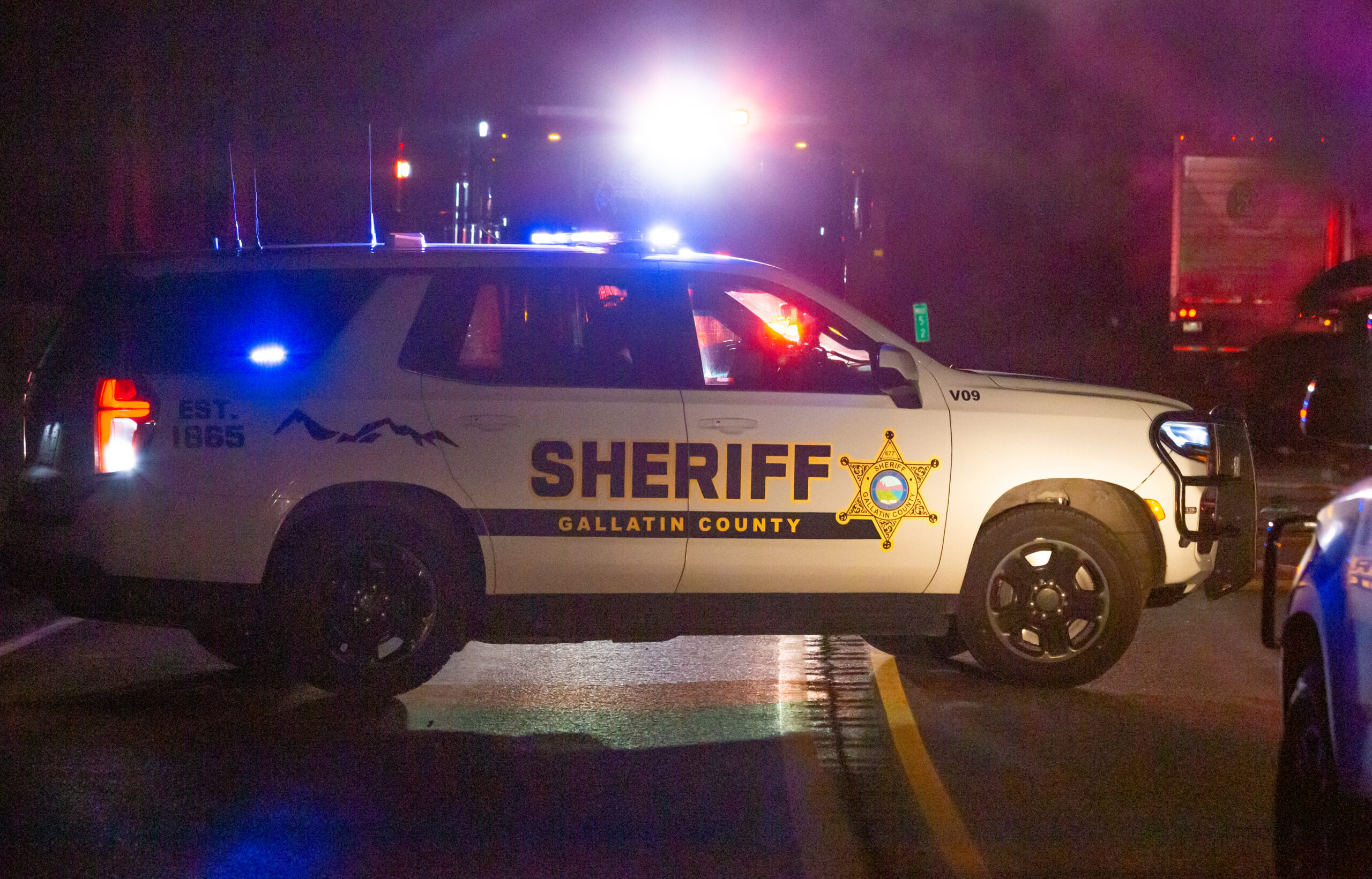
Regional success stories and frameworks
U.S. Highway 191’s challenges are not unique in the Rocky Mountains. Other high-traffic, two-lane roads in the region have faced similar hazards and implemented measures to mitigate them.
In Colorado, for instance, an infamous stretch of U.S. Highway 550—commonly known as the Million Dollar Highway—has undergone extensive safety improvements over the years. Over the years, local authorities introduced strategic pull-outs, enhanced guardrails and traffic-calming designs that collectively slowed traffic and reduced collisions.
Moreover, similar initiatives to install wildlife crossings along other roads have significantly reduced animal-vehicle collisions. These success stories offer a blueprint for U.S. 191.
By adopting improved road maintenance, targeted traffic management, and innovative wildlife crossing solutions—such as those advocated by the Center for Large Landscape Conservation that would help guide animals safely across the highway, thereby reducing collisions and preserving local ecosystems—the Gallatin Canyon region could see a meaningful reduction in accidents and overall traffic hazards.
In planning improvements for U.S. 191, Liva said MDT will engage the public through newsletters, open house forums and individual meetings with stakeholders. “We want to engage the public and get their comments, and see what part they can play.”
The following questions are critical for MDT to address: What specific measures are planned to repair and widen U.S. 191? How will MDT address the ever-rising volume of semi-truck traffic? And what timelines can residents expect for improvements and wildlife crossing installations?
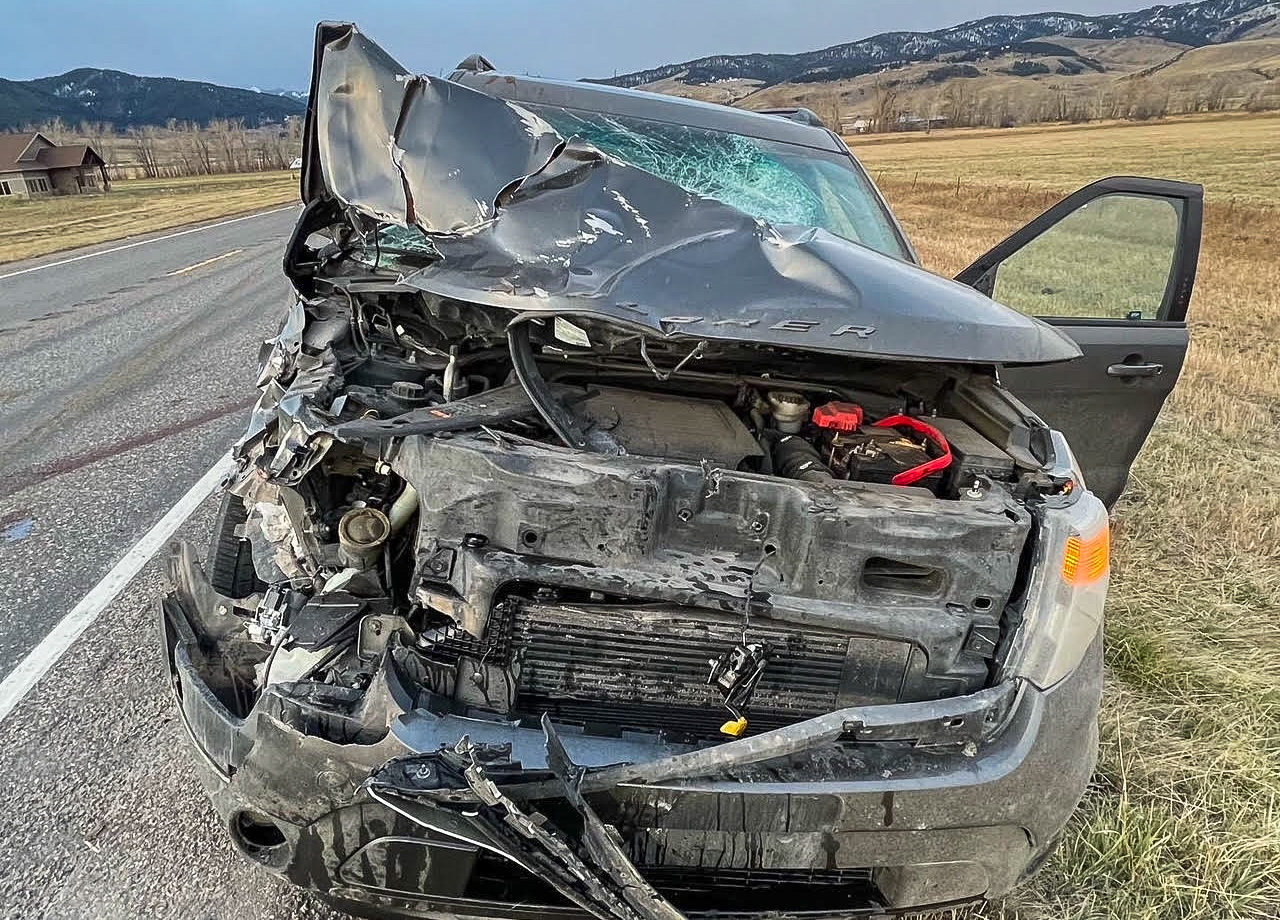
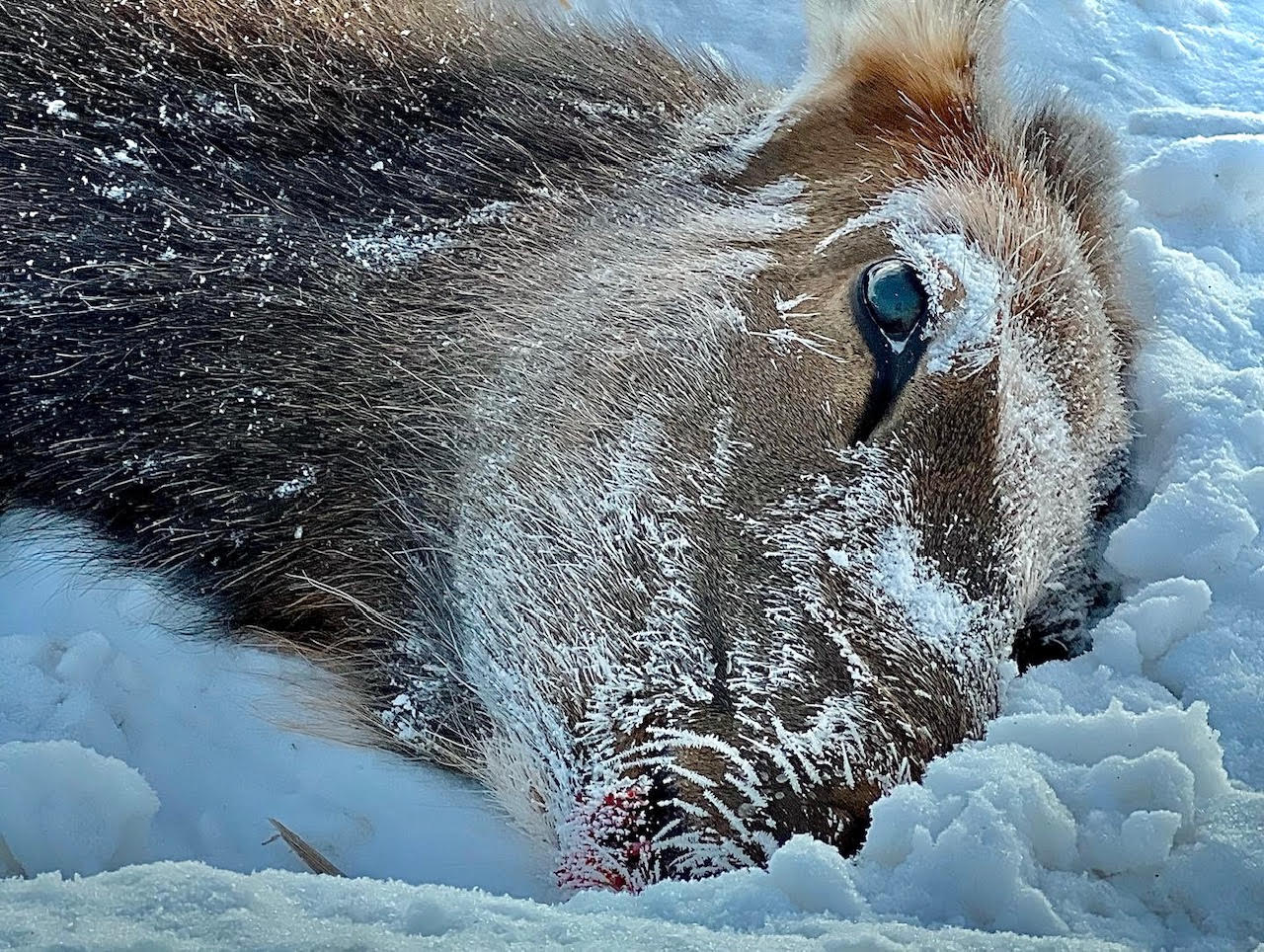
Right: Large ungulates are an unfortunately common sight beside the highway. PHOTOS BY HOLLY PIPPEL
Liva emphasized the topographical constraints that may inhibit efforts to widen the road. Discussing repair, especially in the wake of the recent challenges with potholes and deteriorating road surface, Liva said MDT has experienced some of its patches failing prematurely. MDT is trying a new material to improve durability of pothole repair.
Regarding semi-trucks, he’s confident that MDT designs its roadways to withstand the load of large trucks, and said permits are required for overweight and oversize trucks.
For wildlife crossings, MDT is working with groups like CLLC to evaluate other grant opportunities after recently failing to earn federal funds. And with upcoming planned projects, MDT is working to integrate wildlife connectivity.
“Any project that we have, we are looking at the possibility of improving the safety concerning animal crossing,” Liva said.
The road ahead: How you can get involved
For readers concerned about U.S. 191’s traffic and safety, there are several ways to get involved.

Attend community meetings and town halls to voice your concerns and influence policy changes. Support advocacy groups such as CLLC, which welcomes community engagement and volunteer involvement to promote wildlife crossings and other safety measures. Engage with local officials and MDT to express your concerns and request updates on road maintenance and safety initiatives. Additionally, share this story with friends and family, on social media and through community forums to raise awareness about the ongoing dangers and the need for immediate action. Finally, participate in local safety campaigns and initiatives aimed at reducing high-speed driving and encouraging carpooling.
As Gallatin County continues to expand, the mix of modern commuter challenges with an aging, inadequately maintained road infrastructure creates a perfect storm. Whether through policy changes, targeted infrastructure investments, or tougher regulations on vehicle types, urgent reform on U.S. 191 is imperative.
Local drivers are urged to exercise extreme caution, remain vigilant for wildlife and prepare for sudden changes in weather. The stories of those who have narrowly escaped disaster serve as stark reminders of the real human cost behind crash statistics. With community voices, law enforcement leaders like Sgt. Haydon, environmental advocates like CLLC, and local business leaders such as Brad Niva calling for action, the hope is that comprehensive changes will be implemented before U.S. 191 claims more lives.
Explore Big Sky Newspaper will continue to follow this developing story, keeping you informed as local leaders, MDT, and community members work together to address Montana’s most dangerous road and its critical role in connecting our communities.
Jack Reaney contributed reporting for this story.









